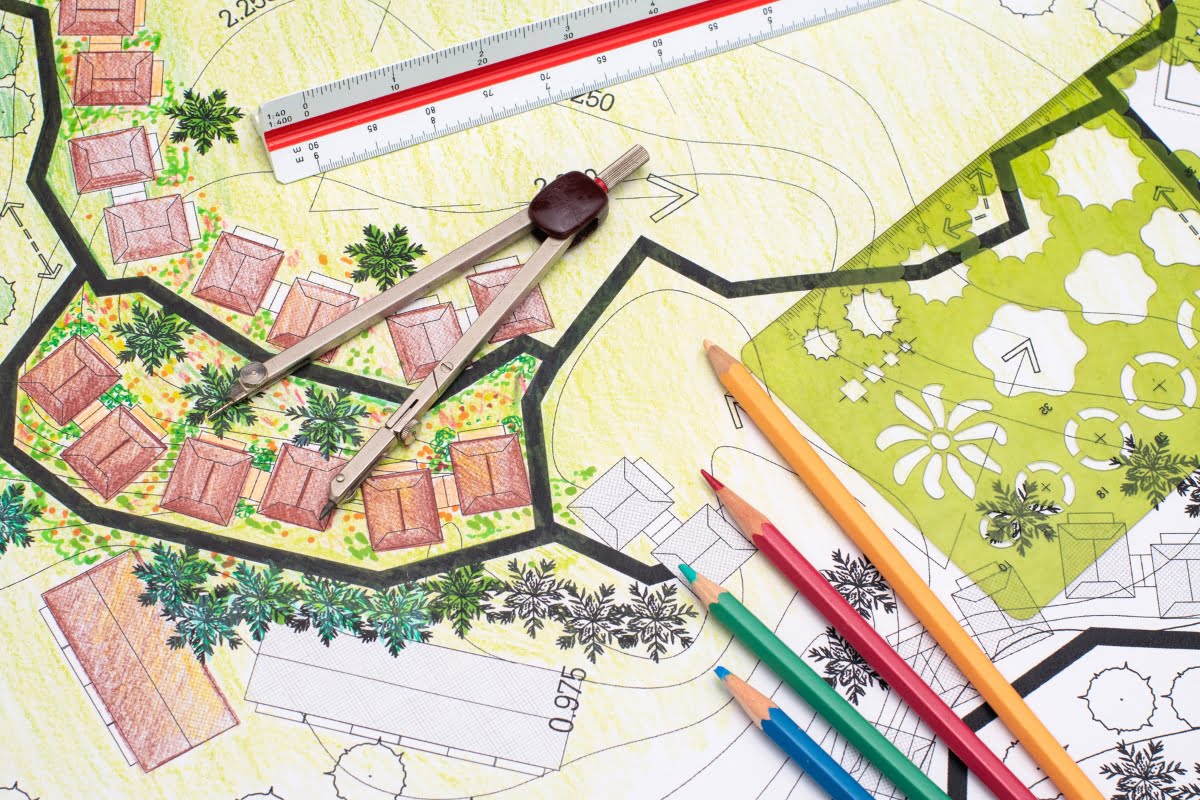Have you ever wandered through a beautifully designed park or strolled along a stunning waterfront promenade and wondered about the creative minds behind these breathtaking spaces?
Landscape architecture is the art and science of designing outdoor environments that harmoniously blend with nature, creating spaces that not only captivate the eye but also enhance our overall well-being.
As cities continue to grow and our connection with the natural world becomes increasingly vital, landscape architecture trends have evolved to reflect our changing needs and desires. In this blog post, we will delve into the latest landscape architecture trends, unveiling a visual symphony of nature that will leave you in awe.
Throughout this post, we will journey through the most intriguing landscape architecture trends of the moment, exploring their enchanting visual aesthetics, and uncovering the underlying principles that guide their creation. So, get ready to be inspired as we unlock the secrets of this visual symphony of nature that is reshaping our surroundings.
Revamp Your Outdoor Space: Discover the Top Landscape Architecture Trends
The Rise of Green Roofs: Transforming Urban Spaces into Lush Gardens
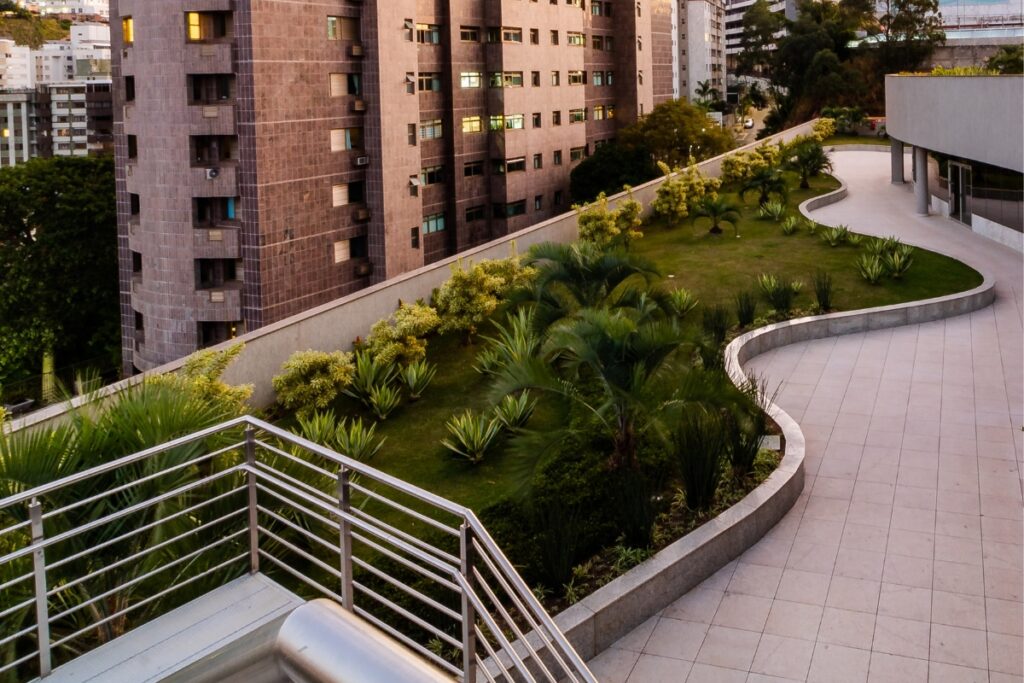
Green roofs have become a prominent feature in urban spaces, transforming them into vibrant and lush gardens. As landscape architecture trends continue to evolve, the incorporation of green roofs has gained significant momentum. These innovative designs not only enhance the aesthetic appeal of buildings but also offer a range of environmental benefits.
Green roofs, also known as living roofs or vegetated roofs, involve the cultivation of plants atop a building structure. This practice has been around for centuries, with ancient civilizations utilizing vegetation to insulate their homes and create cooling effects. However, it is in recent years that green roofs have gained popularity as a modern sustainable solution.
One of the primary benefits of green roofs is their ability to mitigate the urban heat island effect. In densely populated cities, concrete and asphalt surfaces absorb heat during the day and release it at night, leading to higher temperatures. By covering rooftops with vegetation, green roofs can significantly reduce the ambient temperature, creating a more comfortable and cooler living environment.
Additionally, green roofs act as a natural filter, improving air quality by capturing pollutants and particulate matter. The plants and soil on green roofs absorb carbon dioxide, a major greenhouse gas, and release oxygen, promoting cleaner air. This not only benefits the building occupants but also contributes to the overall air quality in urban areas.
Furthermore, green roofs provide valuable habitat for birds, insects, and other forms of wildlife. As urbanization continues to encroach upon natural habitats, green roofs offer a refuge for biodiversity within cities. This ecological element enhances the urban landscape and helps support local ecosystems.
From a stormwater management perspective, green roofs play a pivotal role in reducing runoff. The vegetation and soil on green roofs act as a sponge, absorbing rainwater and slowing down its release. This helps prevent flooding, alleviate strain on drainage systems, and improve overall water quality by filtering out pollutants.
The rise of green roofs has also prompted a shift in urban gardening and food production. With limited space in cities, rooftop gardens provide an opportunity for cultivating fruits, vegetables, and herbs. This not only promotes local food production and sustainability but also encourages a closer connection between urban dwellers and the food they consume.
Vertical Forests: Where Architecture Meets Nature
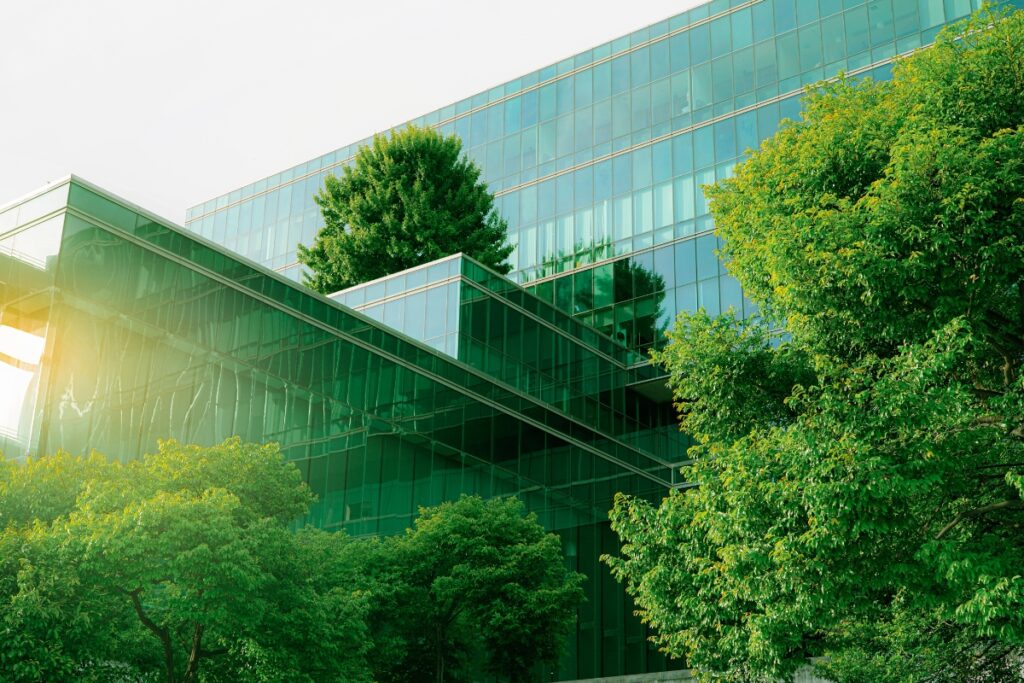
Vertical forests have emerged as a breathtaking trend in landscape architecture. These innovative designs seamlessly blend architecture with nature, creating visually stunning and environmentally friendly structures. With their towering greenery and sustainable features, vertical forests have captured the imagination of architects, environmentalists, and nature enthusiasts alike.
Landscape architecture trends have evolved over the years, embracing sustainability and harmonizing with the natural environment. Vertical forests epitomize this approach, showcasing the possibilities of integrating nature into urban spaces. These architectural marvels feature towering skyscrapers clad in lush greenery, transforming concrete jungles into vibrant ecosystems.
One of the key benefits of vertical forests is their ability to combat air pollution. By absorbing carbon dioxide and releasing oxygen, these living structures act as natural air filters, purifying the surrounding atmosphere. They also provide shade, reducing the urban heat island effect and creating a more pleasant microclimate.
Beyond their environmental benefits, vertical forests also enhance the aesthetic appeal of the urban landscape. The lush green facades create a striking contrast against the city’s concrete structures, adding a touch of serenity and tranquility. The vibrant colors and textures of the plant life make these vertical gardens a treat for the eyes, turning buildings into living works of art.
Vertical forests are not just limited to their exterior beauty. These architectural wonders also incorporate sustainable features within their design. Rainwater harvesting systems, solar panels, and energy-efficient technologies are seamlessly integrated into the structures, reducing their ecological footprint and promoting sustainability.
The concept of vertical forests has gained significant traction worldwide, with numerous projects being developed across different cities. Milan’s Bosco Verticale, designed by Stefano Boeri Architetti, is one of the most iconic examples. This residential complex features over 900 trees and 20,000 plants, providing its residents with a green oasis in the heart of the city.
In Asia, cities like Singapore and Shanghai have also embraced the concept of vertical forests. The Oasia Hotel in Singapore boasts a striking facade covered in greenery, while the Liuzhou Forest City in China aims to create a self-sustaining community with its forested towers.
The popularity of vertical forests is a testament to the growing importance of sustainable architecture. As the world becomes more conscious of environmental issues, architects are finding innovative ways to create living spaces that coexist harmoniously with nature. Vertical forests offer a glimpse into a greener and more sustainable future, where architecture and nature work hand in hand.
Biophilic Design: Embracing Nature in the Built Environment
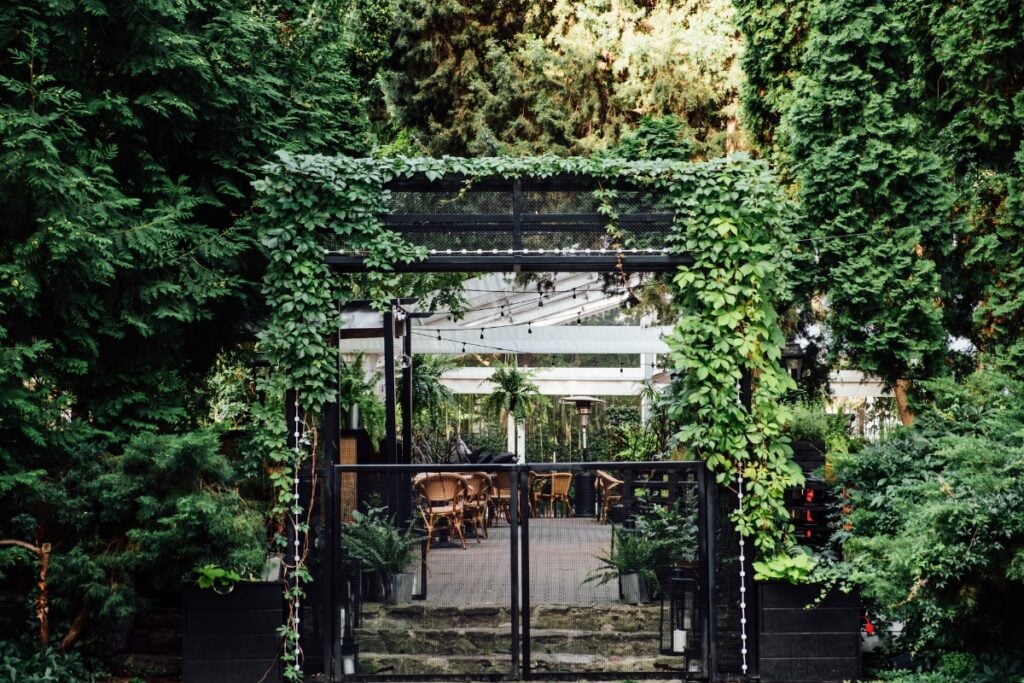
Biophilic design is a concept that focuses on integrating nature into the built environment, creating spaces that promote physical and mental well-being. In today’s fast-paced and urbanized world, the need for biophilic design has become increasingly important. As landscape architecture trends continue to evolve, professionals in the field are finding innovative ways to bring nature back into our lives.
One of the key aspects of biophilic design is the incorporation of natural elements. This can be achieved through the use of materials such as wood, stone, and water features. By using these organic materials, architects and landscape designers are able to create a sense of connection to the natural world. Green roofs and living walls are also popular features in biophilic design, as they not only provide aesthetic appeal but also improve air quality and insulation.
In addition to incorporating natural elements, biophilic design also focuses on creating spaces that promote human interaction with nature. This can be done through the inclusion of outdoor seating areas, walking paths, and communal gardens. By providing these spaces, individuals are encouraged to spend time outdoors, engaging with their surroundings and benefiting from the positive effects of nature on their well-being.
Technology has also played a role in the evolution of landscape architecture trends. With the advancement of virtual reality and augmented reality, designers are able to create immersive experiences that mimic the natural environment. This allows individuals to experience nature even when they are in urban settings, further blurring the lines between the built and natural environment.
Another aspect of biophilic design is the consideration of the local ecosystem. Landscape architects are increasingly incorporating native plants and vegetation into their designs, as they are better suited to the local climate and require less maintenance. This not only helps to support local wildlife but also reduces the need for water and chemical inputs, making it a more sustainable approach to landscaping.
As the demand for biophilic design continues to grow, it is important for professionals in the field to stay updated on the latest trends and research. Attending conferences, workshops, and networking events can provide valuable insights and connections with like-minded individuals. Collaboration with other disciplines such as architecture, interior design, and urban planning is also key to creating holistic and impactful biophilic design solutions.
Sustainable Landscapes: Harmonizing Ecology and Functionality
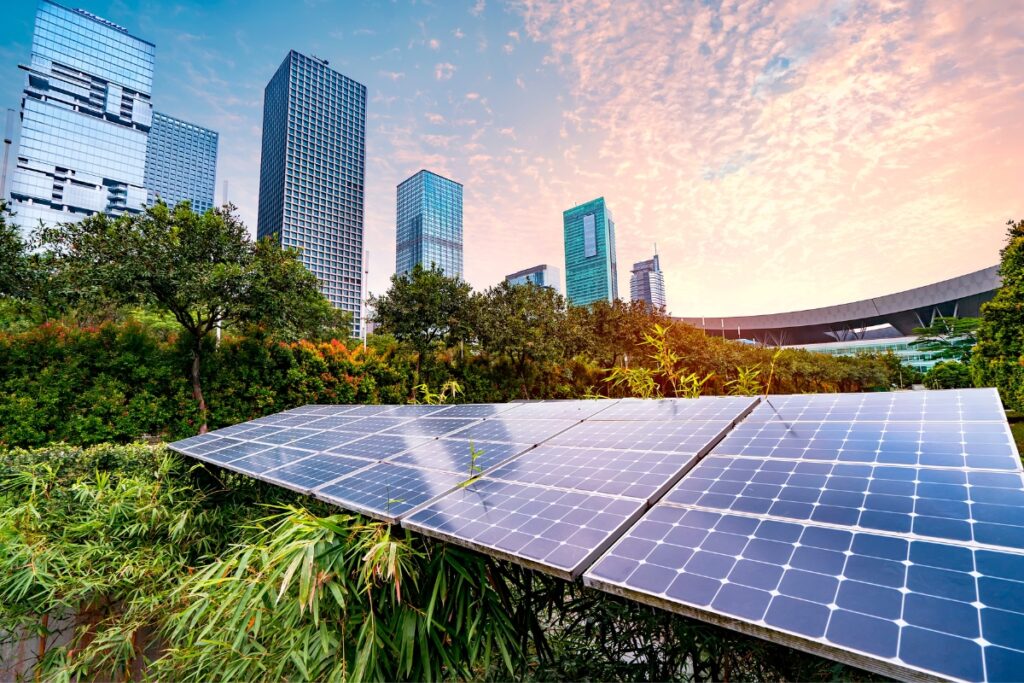
As landscape architecture continues to evolve, the latest trends showcase a seamless integration of nature and functionality. These sustainable landscapes are designed to harmonize ecology and human needs, creating spaces that are not only visually appealing but also environmentally responsible.
One of the key elements of sustainable landscapes is the use of native plants and materials. Native plants are well-adapted to the local climate and require minimal maintenance, reducing the need for water and chemical inputs. By using native materials, such as locally-sourced stones and timber, landscape architects can minimize the environmental impact of their designs.
In addition to using native plants and materials, sustainable landscapes also prioritize water conservation. This can be achieved through the implementation of rainwater harvesting systems, permeable paving, and efficient irrigation systems. By reducing water consumption and minimizing runoff, these landscapes help to preserve this precious resource.
Furthermore, sustainable landscapes aim to create habitats for wildlife. By incorporating elements such as bird feeders, bat houses, and pollinator gardens, landscape architects can support local ecosystems and enhance biodiversity. These habitats not only provide a haven for wildlife but also contribute to the overall health and resilience of the landscape.
Functionality is another crucial aspect of sustainable landscapes. These designs are not only aesthetically pleasing but also serve a purpose. The inclusion of outdoor seating areas, walking paths, and recreational spaces ensures that these landscapes are practical and enjoyable for people of all ages. Whether it’s a community park or a rooftop garden, functionality is at the forefront of sustainable landscape architecture.
Sustainable landscapes often incorporate renewable energy sources. Solar panels and wind turbines can be seamlessly integrated into the design, providing clean energy to power lighting, water features, or other landscape elements. By harnessing the power of nature, these landscapes further reduce their carbon footprint and contribute to a more sustainable future.
Ecological Restoration: Healing the Land through Landscape Architecture
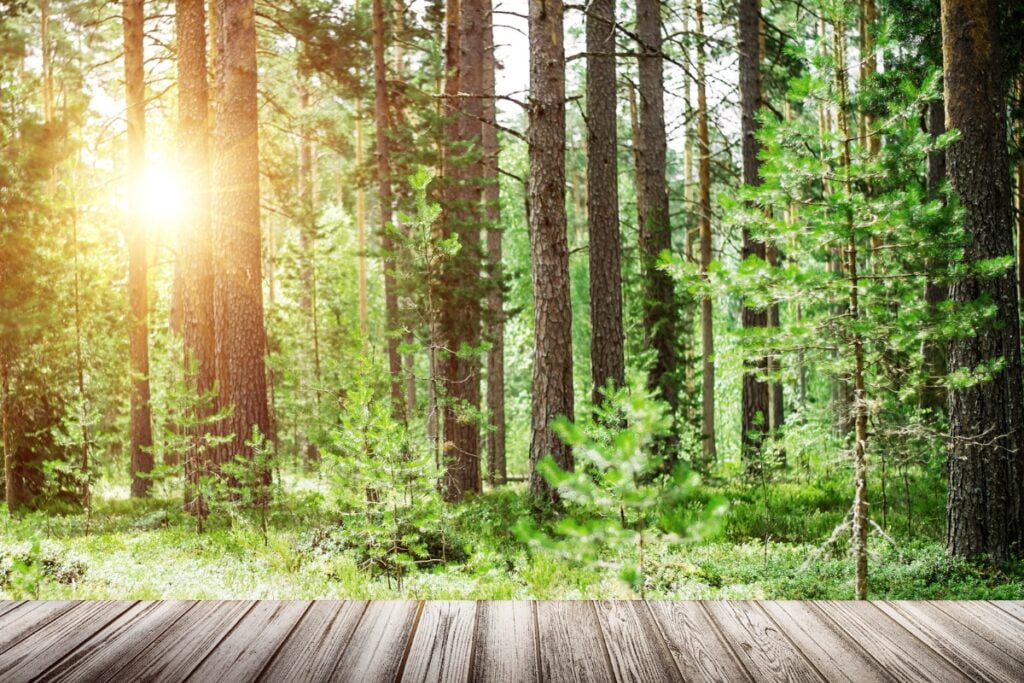
Ecological restoration is a powerful tool that landscape architects can use to heal the land and create sustainable environments. Through careful planning and implementation, they can transform degraded or damaged landscapes into thriving ecosystems. This practice goes beyond traditional landscaping to address the larger ecological context and promote biodiversity.
One of the latest landscape architecture trends is a focus on incorporating nature into urban spaces. As cities expand and green spaces become scarce, landscape architects are finding innovative ways to bring nature back into the urban environment. This includes creating rooftop gardens, vertical green walls, and incorporating green infrastructure into urban design plans.
Another trend in landscape architecture is the use of native plants and materials. Native plants are well-adapted to the local climate and require less maintenance, water, and pesticides. By using native plants, landscape architects can create resilient landscapes that support local ecosystems and wildlife.
Sustainable design practices are also becoming increasingly important in landscape architecture. This includes using environmentally friendly materials, designing for water conservation and stormwater management, and creating spaces that promote energy efficiency. Landscape architects are incorporating renewable energy sources such as solar panels and wind turbines into their designs, and using materials that have a low carbon footprint.
In addition to addressing environmental concerns, landscape architects are also taking into account social and cultural factors. They are creating spaces that promote community engagement, improve public health, and enhance the quality of life. This includes designing parks and recreational areas that encourage physical activity, incorporating seating and gathering spaces into urban design plans, and considering the needs and preferences of different user groups.
Water as a Design Element: From Fountains to Rain Gardens
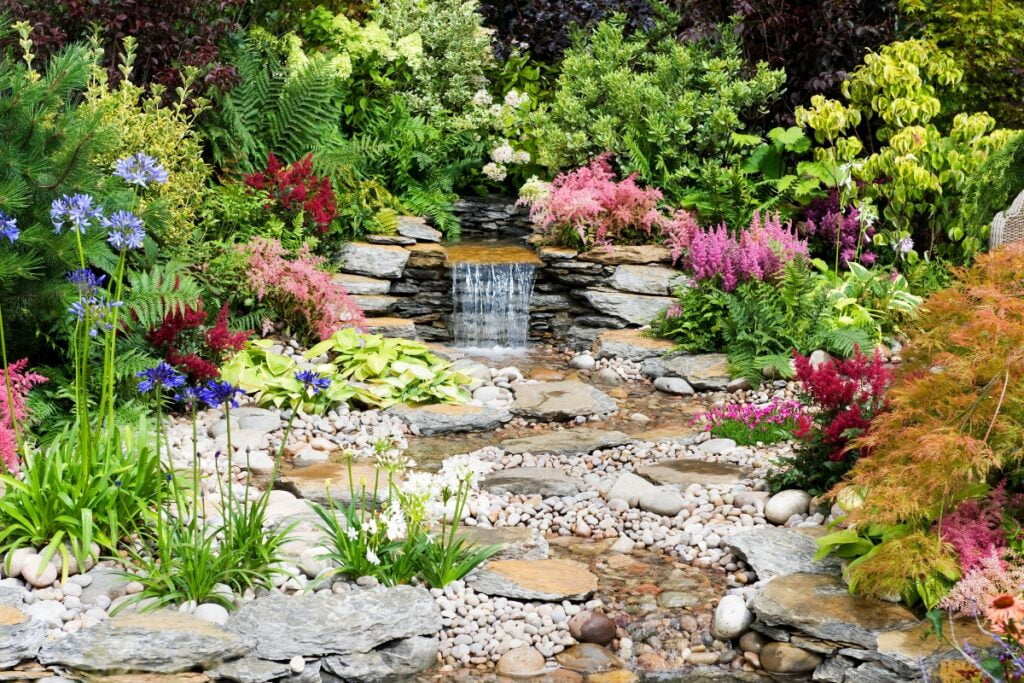
Water has long been regarded as one of the most versatile and captivating design elements in landscape architecture. From fountains to rain gardens, its presence can create a visual symphony of nature that is both aesthetically pleasing and environmentally beneficial. In this blog post, we will explore how water can be utilized as a design element, highlighting the latest landscape architecture trends that incorporate this dynamic element.
Fountains have been a prominent feature in landscape architecture for centuries. The sound and movement of water can evoke a sense of tranquility and serenity, providing a restful oasis amidst the hustle and bustle of urban environments. Today, fountains are being reimagined with innovative designs and technologies. From interactive water features that respond to the touch of a button, to dynamic displays that incorporate light and music, fountains are now more captivating and engaging than ever before.
Another trend in landscape architecture is the use of water as a sustainable design element. Rain gardens, for example, are becoming increasingly popular as a way to manage stormwater runoff and promote biodiversity. These gardens are designed to collect rainwater from rooftops, sidewalks, and other surfaces, allowing it to slowly infiltrate into the ground. This not only reduces the strain on municipal stormwater systems but also helps to replenish groundwater and provide habitat for native plants and wildlife.
In addition to fountains and rain gardens, water can also be incorporated into landscape architecture through the use of ponds, streams, and waterfalls. These naturalistic features can create a sense of harmony and balance in outdoor spaces, mimicking the beauty and tranquility of natural water bodies. They can also serve functional purposes, such as providing a habitat for aquatic plants and animals or acting as a natural cooling system in hot climates.
One of the emerging trends in landscape architecture is the integration of water with technology. Smart irrigation systems, for example, use sensors and weather data to optimize the watering of plants, minimizing water waste and ensuring efficient water usage. Similarly, water features can be equipped with programmable lighting and sound systems, creating immersive experiences that captivate and delight visitors.
Smart Landscapes: Using Technology to Enhance Outdoor Spaces

In today’s fast-paced world, technology has infiltrated almost every aspect of our lives, including our outdoor spaces. Gone are the days when landscaping was solely reliant on manual labor and traditional design techniques. With the advent of smart landscapes, technology is now being harnessed to create stunning outdoor spaces that are not only aesthetically pleasing but also highly functional.
One of the key trends in landscape architecture is the integration of smart technology into outdoor spaces. From automated irrigation systems to remote-controlled lighting, technology is revolutionizing the way we interact with our landscapes. These smart features allow homeowners and landscape designers to have greater control over their outdoor spaces, making it easier to maintain and enjoy them year-round.
One of the most popular technological advancements in landscape architecture is the use of smart irrigation systems. These systems utilize sensors and weather data to determine the optimal amount of water needed for a particular landscape. By adjusting water usage based on real-time information, smart irrigation systems not only conserve water but also promote healthy plant growth. This not only benefits the environment but also saves homeowners money on their water bills.
Another innovative use of technology in outdoor spaces is the incorporation of smart lighting systems. These systems allow homeowners to remotely control the lighting in their landscapes, creating different moods and ambiances at the touch of a button. Whether it’s soft, ambient lighting for a relaxing evening or bright, vibrant lights for a lively outdoor gathering, smart lighting systems offer endless possibilities to enhance the overall experience of an outdoor space.
Furthermore, technology is also being used to create smart outdoor entertainment systems. From outdoor speakers to weatherproof televisions, homeowners can now enjoy their favorite music and movies while surrounded by nature. These systems are designed to withstand the elements and provide high-quality sound and visuals, making outdoor entertainment a truly immersive experience.
In addition to these advancements, technology is also being used to create sustainable landscapes. From solar-powered lighting to permeable paving materials, smart landscapes are designed with sustainability in mind. These eco-friendly features not only reduce the carbon footprint of outdoor spaces but also contribute to a healthier environment.
Conclusion: Creating a Symphony of Nature in Our Surroundings
In the world of landscape architecture, trends are constantly evolving, shaping the way we interact with the natural environment. Today, creating a symphony of nature in our surroundings has become a central concept in landscape design.
By incorporating elements inspired by the natural world, landscape architects are able to harmonize our built environment with the beauty of nature. These trends not only enhance the aesthetic appeal of our surroundings but also contribute to a more sustainable and environmentally friendly future.
If you’re interested in landscaping services to bring these trends to your own property, choose Glover Landscapes! Tell us about your landscaping vision by giving us a call at (404) 510-6437 or by connecting with us or requesting a free project quote through our website form. Take your landscaping to the next level with Glover Landscapes today!
